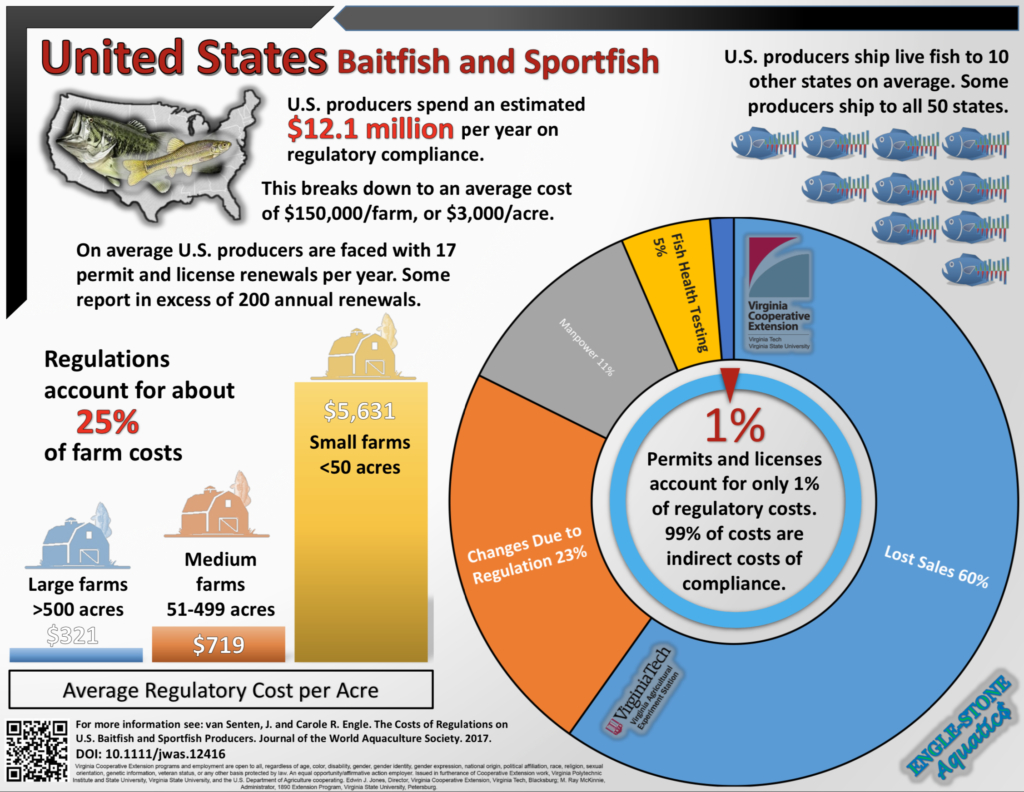Several studies planned that will produce important information for California fish farms.
The first study is a USDA-NIFA funded project to measure the regulatory costs on catfish, tilapia, and hybrid striped bass farms across the U.S. (This study is also looking at regulatory costs on tropical fish farms in Florida and shellfish farms on the Atlantic Coast). Interviews with catfish farmers in the southern Mississippi Delta region have been completed, and the tilapia and hybrid striped bass farm interviews are currently underway in other states. California catfish, tilapia, and hybrid striped farmers will be asked to contribute to the next phase of this study.
Regulatory costs on U.S. baitfish/sportfish, trout & salmon, and Pacific Coast shellfish farms has been previously measured. Below are two infographics that were developed from those projects that are being used by farmers in their attempts to seek regulatory reform and relief. Other infographics and journal article links are available here. The information on the costs of regulations opens many eyes because it has been found to be much greater than most people realize. For example, in the previous trout & salmon study, annual regulatory costs per farm averaged $150,506 and $1.23 per pound of fish raised. The majority of the increased costs were related to direct costs (i.e. testing for fish health certificates and effluent discharges) as well as the indirect cost of increased manpower costs due to regulatory requirements. Per farm, lost market sales due to regulations were $66,274 per year, the value of lost production averaged $49,065 per year, and the value of lost sales from thwarted expansion attempts averaged $375,459 per year per farm.
The second study will measure the economic impact of aquaculture in California as well as other states in the Western region. It is funded by the Western Regional Aquaculture Center (WRAC). Supply chains will be mapped to capture as many of the economic effects as possible, especially those related to the live fish trade that have not previously been measured. In the WRAC project, a number of infographics, videos, fact sheets and other products will be developed and posted online to provide more readily accessible information about California aquaculture (and of other states in the Western region).
California producers are encouraged to contribute to these studies. A member of the Virgina Tech team administering these studies will reach out soon. Please contact Carole Engle with any questions: cengle8523@gmail.com | 870-489-4259




Recent Comments